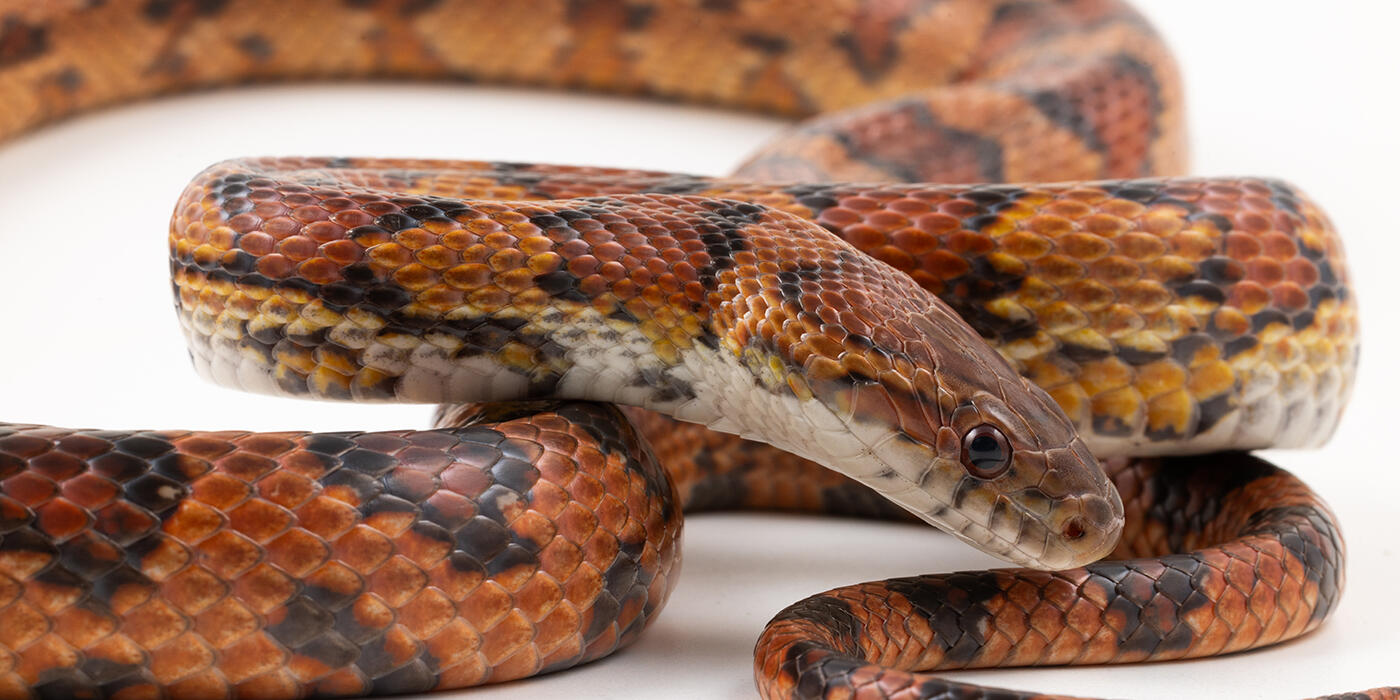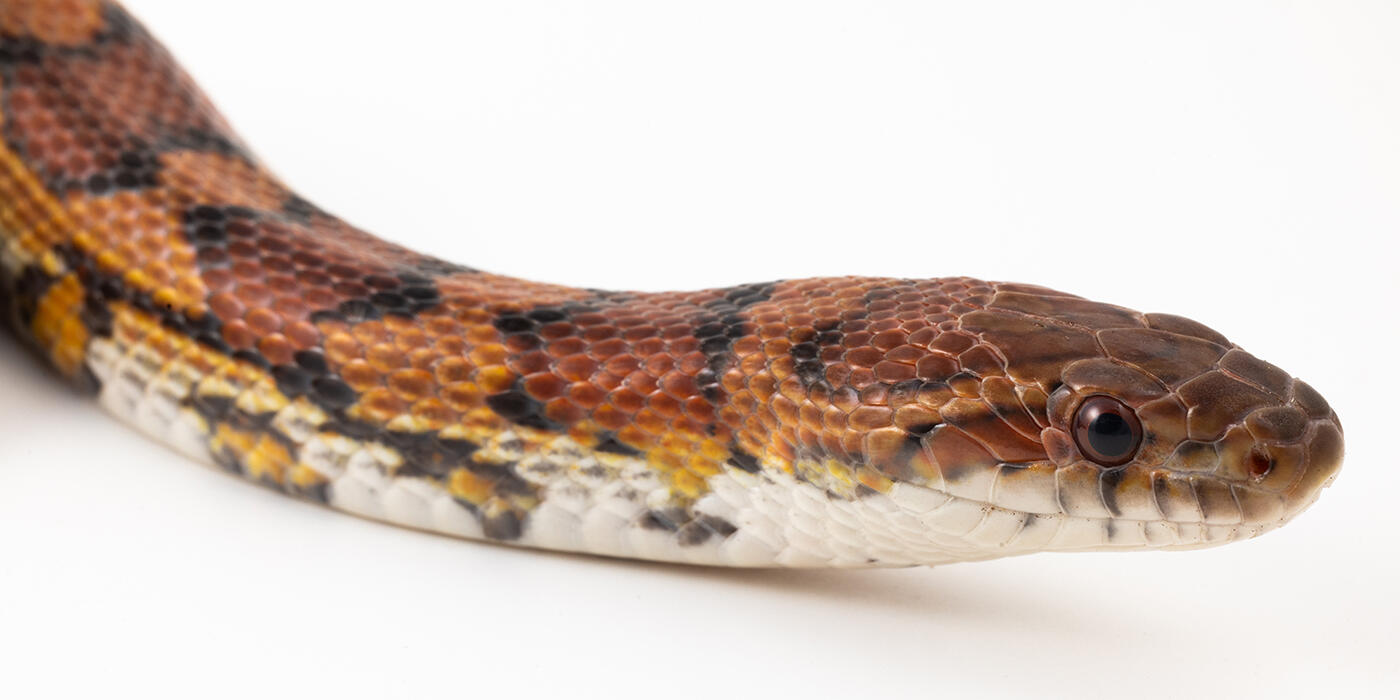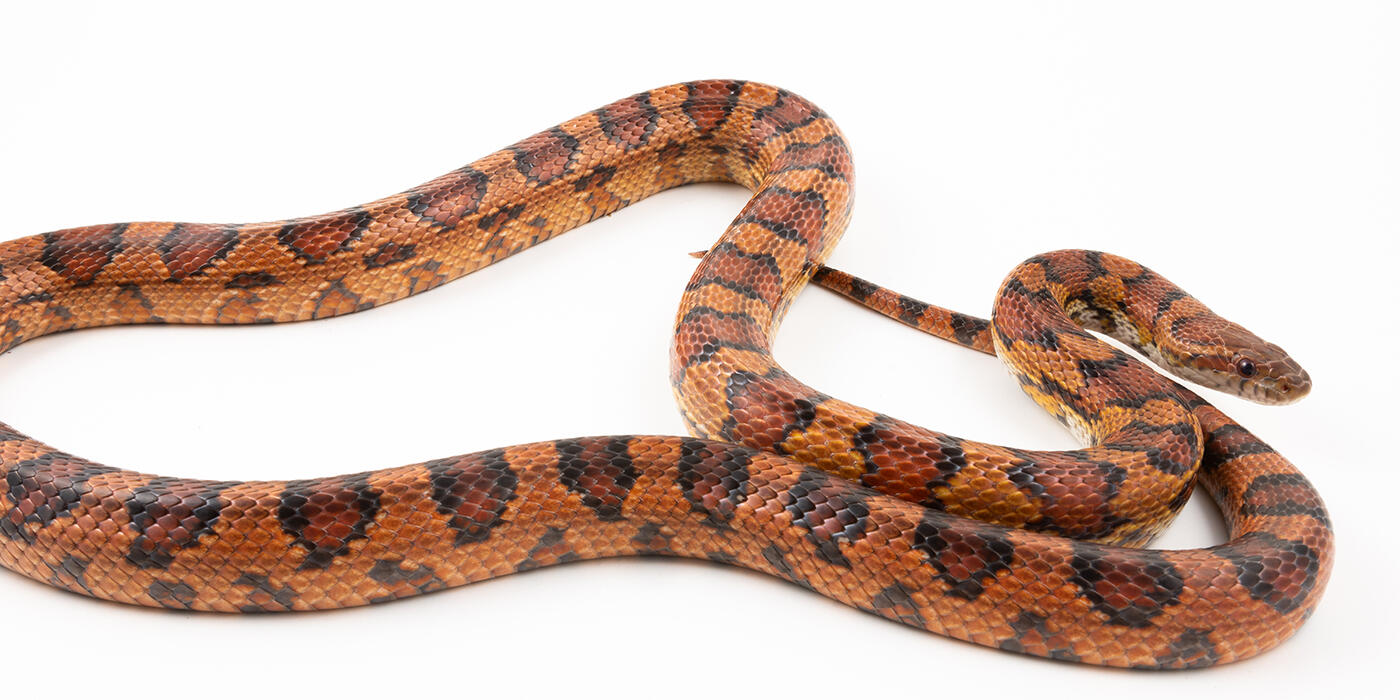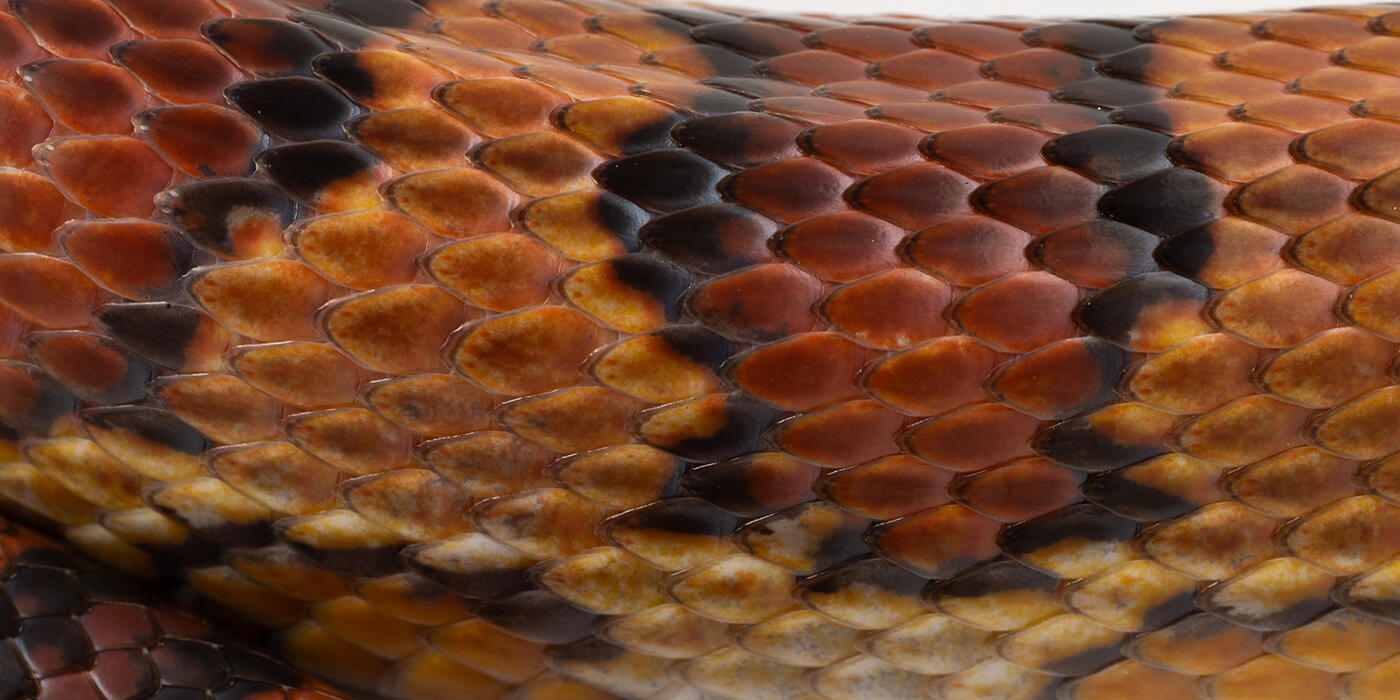Physical Description
Corn snakes, sometimes called red rat snakes, are slender, orange or brownish-yellow snakes with a pattern of large, red blotches outlined in black down their backs.
Along their bellies are distinctive rows of alternating black and white marks, which resemble a checkerboard pattern. The name corn snake may have originated from the similarity of these markings to the checkered pattern of kernels of maize or Indian corn.
These snakes exhibit considerable variations in color and pattern, depending on their age and geographic range. Young hatchlings also lack the brighter coloration seen in adults.
Size
Corn snakes are approximately 61 to 182 centimeters (24 to 72 inches) long.
Native Habitat
Corn snakes are found in the eastern United States from southern New Jersey to Florida, into Louisiana and parts of Kentucky. They are most abundant in Florida and other southeastern states.
Introduced populations have been recorded on several islands in the Caribbean, with established populations in the Bahamas (New Providence and Grand Bahama), Grand Cayman, the U.S. Virgin Islands (St. Thomas) and the Lesser Antilles.
These snakes inhabit wooded groves, rocky hillsides, meadowlands, woodlots, rocky open areas, tropical hammocks, barns and abandoned buildings.
Lifespan
Corn snakes live up to 23 years in human care, but their lifespan is shorter in the wild.
Food/Eating Habits
These constrictors bite their prey to get a firm grip, then quickly coil themselves around their meal, squeezing tightly until the prey is subdued. Finally, they swallow their food whole, usually headfirst. Corn snakes have also been observed swallowing small prey alive.
These snakes typically feed every few days. Young hatchlings eat lizards and tree frogs, while adults feed on larger prey, such as mice, rats, birds and bats. At the Smithsonian's National Zoo, corn snakes eat mice and rats.
Sleep Habits
Corn snakes are primarily diurnal, or most active during the day. Corn snakes readily climb trees and enter abandoned buildings in search of prey. However, they are very secretive and spend most of their time underground prowling through rodent burrows. They often hide under loose bark or beneath logs, rocks and other debris during the day.
Reproduction and Development
Breeding season for these snakes takes place from March to May. Corn snakes are oviparous, meaning they lay eggs that later hatch. In late May to July, the female snake lays a clutch of 10 to 30 eggs in rotting stumps, piles of decaying vegetation or other similar locations with sufficient heat and humidity to incubate the eggs.
Adult corn snakes do not care for their eggs, which require about 60 to 65 days at a temperature of about 82 degrees Fahrenheit to hatch. The eggs hatch between July and September, and hatchlings are 25 to 38 centimeters (10 to 15 inches) long. They reach maturity in about 18 to 36 months.
Conservation Efforts
Throughout its range, the corn snake's population appears relatively stable. However, the state of Florida lists corn snakes as a species of special concern, and they are protected in Georgia.
On a local scale, corn snakes can be impacted by habitat destruction. Additionally, corn snakes are sometimes mistaken for the venomous copperhead snake and killed as a result.
Corn snakes are widely popular as pets. In fact, they are the most commonly bred snake species in the pet industry. Like many snakes, corn snakes also provide an important service to humans: they control rodent populations. By preying on rodents, corn snakes help prevent the spread of diseases associated with these animals.
Help this Species
If you see a snake in the wild, leave it alone and encourage others to do the same. Don’t assume it is a venomous species, and don’t attack it if it doesn’t pose a threat to your safety. Tell your friends and family about the eco-services that snakes provide, such as keeping rodent populations in check.
Smithsonian's National Zoo and Conservation Biology Institute. (n.d.). Eastern corn snake. Retrieved December 28, 2025, from https://nationalzoo.si.edu/animals/eastern-corn-snake






